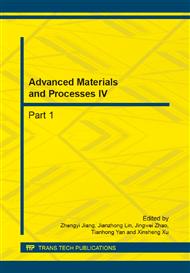p.1273
p.1277
p.1281
p.1285
p.1289
p.1294
p.1299
p.1303
p.1311
The Dynamic Characteristic Analysis of Vibration System for Longitudinal and Torsional Ultrasonic Vibration Honing
Abstract:
The tool’s unique movement trajectory in longitudinal and torsional ultrasonic machining technology can help chip extraction. Cutting liquid can offer good lubrication, cleaning and cooling. It also can prolong tool’s life, improve the processing quality and processing efficiency, so it is widely used in precision and ultra-precision machining. It builds the model of ultrasonic vibration system, based on the motion analysis of longitudinal and torsional ultrasonic vibration honing. In addition, mode analysis, transient dynamic analysis and harmonic response analysis are carried out by means of finite element analysis software ANSYS. Using graphics and curve in the postprocessing module describe the results of numerical simulation. It can provide powerful model and theoretical basis for the structure design and performance optimization of ultrasonic vibration system, which is used for longitudinal and torsional ultrasonic vibration honing.
Info:
Periodical:
Pages:
1289-1293
Citation:
Online since:
September 2014
Authors:
Price:
Сopyright:
© 2014 Trans Tech Publications Ltd. All Rights Reserved
Share:
Citation:


